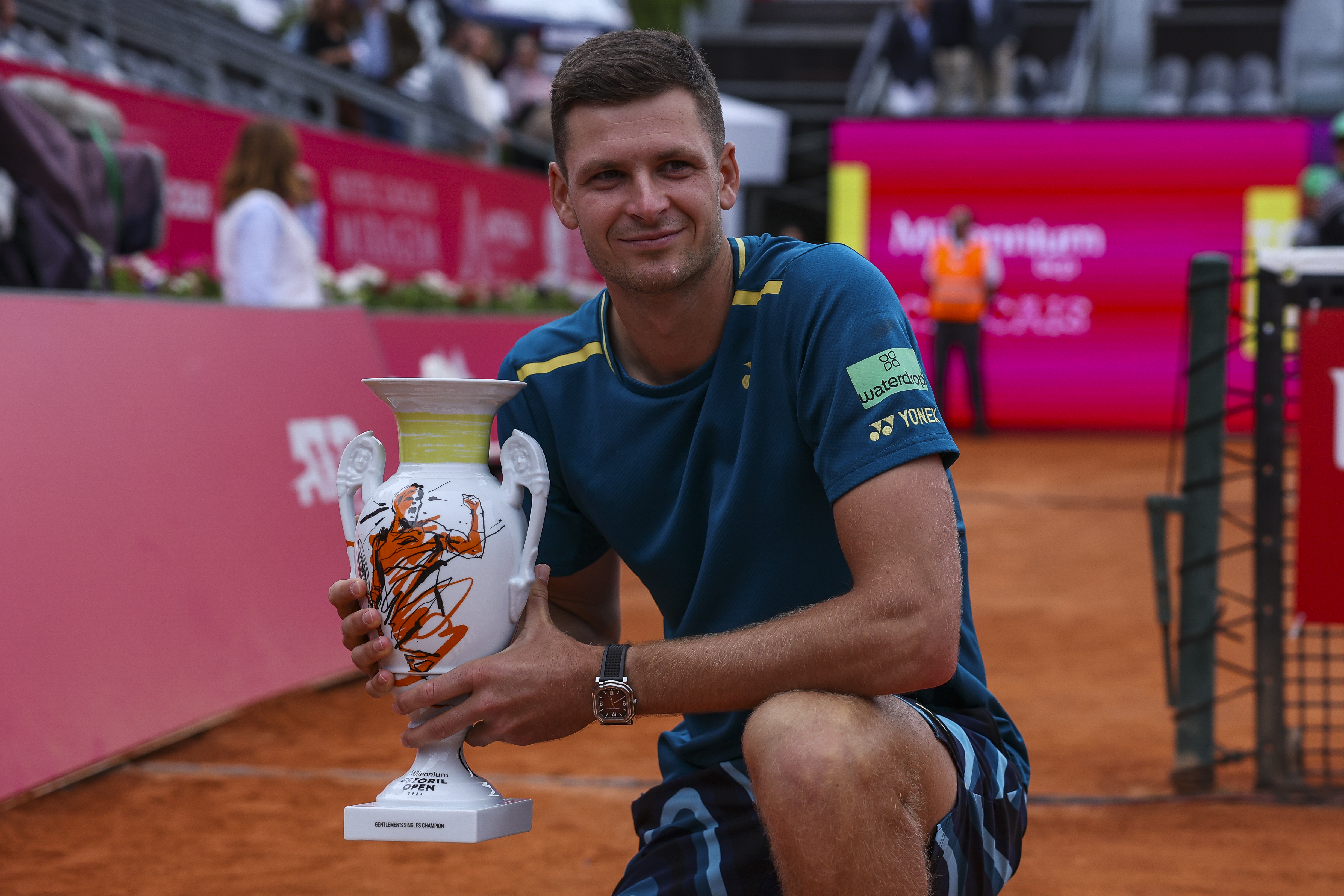Unconventional Prize Presentation
Tennis ace Hubert Hurkacz recently clinched victory at the Estoril Open, but the way he received his prize money left fans scratching their heads. Instead of a traditional cheque, the Pole was handed over £75,000 through a touch screen device, sparking mixed reactions from onlookers.
A New Way to Cash In
Following his triumph over Pedro Martinez, Hurkacz was presented with his impressive winnings via a touch screen machine. While tennis champions are accustomed to posing with oversized cheques, Hurkacz opted for a more modern approach, receiving a bank transfer confirmation on the screen.
Fans Express Surprise
As Hurkacz acknowledged the completion of the money transfer to the crowd, some fans couldn't help but express their astonishment at the unconventional method. One fan mentioned feeling like they were witnessing a McDonald's ordering machine, adding a whimsical touch to the ceremony.
Frequently Asked Questions
How important is diet and nutrition in the training of an elite tennis players?
Tennis players do not fall short of the requirements for a healthy diet and nutrition. Appropriate dietary intake supports intensive training by providing the necessary energy, facilitating recovery, and reducing the risk of injuries. The diet of an elite athlete is typically a mixture of carbohydrates and proteins with vitamins and essential minerals. Maintaining a fluid balance and preventing fatigue is also important.
What age should a young player start training in order to be a professional footballer?
Although there isn’t a set age at which to start training for professional tennis it does give you an edge if you begin early. Most professional tennis players start training between the age of 4 and 7 years old. Early development allows for a player to establish a solid foundation with regards to skills, technique and coordination. However, it’s crucial to balance training with general childhood development to nurture a passion for the game without causing burnout or injury.
What role plays video analysis in training top tennis athletes?
Video analysis is a critical tool for training and developing top tennis players. It allows for a detailed review of techniques, tactics, match play, and opponent patterns. Coaches and players utilize video analysis to dissect strokes, pinpoint areas for improvement, and strategize against future opponents. It can also help to recognize habits and patterns that are often overlooked in the heat of competition. This allows for more effective and focused practice sessions.
How can a player of tennis balance training and school requirements?
Balancing academic responsibilities and intense training schedules is a significant challenge for aspiring tennis players. This involves excellent time management and prioritization. It also requires creative scheduling. Online schooling programs and flexible academic schedules can help young athletes manage their training and travelling schedules. Support from parents, coaches and educational establishments is essential to ensure that players can achieve their goals while maintaining their education.
How does mental and psycho-social training affect tennis training?
Mental and psychological training is as paramount as physical training in tennis. Players must learn to manage stress, maintain focus, and handle the emotional highs and lows of competition. Common techniques include visualization, goal setting, and mental rehearsals. A sports psychologist can assist players in building resilience, developing coping strategies to deal with pressure, and elevating their mental game so that it matches their physical prowess.
Statistics
- Studies show that superior agility and speed among tennis players can reduce their reaction time by up to 30%, which is crucial during high-level matches.
- Persistent mental training and sports psychology can help reduce performance anxiety by up to 60%, according to sports psychologists working with elite athletes.
- On average, it’s estimated that only 1 in 5000 high-level junior tennis players will develop into internationally ranked professionals.
- Top tennis players typically train for 4 to 6 hours per day, divided between on-court practice and fitness training.
- Engaging in structured video analysis sessions has been shown to improve a player’s tactical decision-making by approximately 35%.
External Links
tennisfitness.com
atptour.com
optimumtennis.net
myprocoach.net
tenniscompanion.org
How To
How to create a pre-match warm-up routine for tennis
Tennis warm-ups should prepare you for competition by preparing your body and mind. Start with a light cardio exercise such as jogging, jumping jacks or stair climbing to increase your heart rate. You can then move on to dynamic stretches, focusing primarily on your legs. arms, and torso, to improve flexibility without losing muscle strength. Include sport-specific exercises such as shadow swiping with your racket for rehearsing groundstrokes. Use agility drills to improve your footwork, and then practice short points or serve to perfect your timing. A thorough warm-up can help you perform better and reduce your risk of injury.

